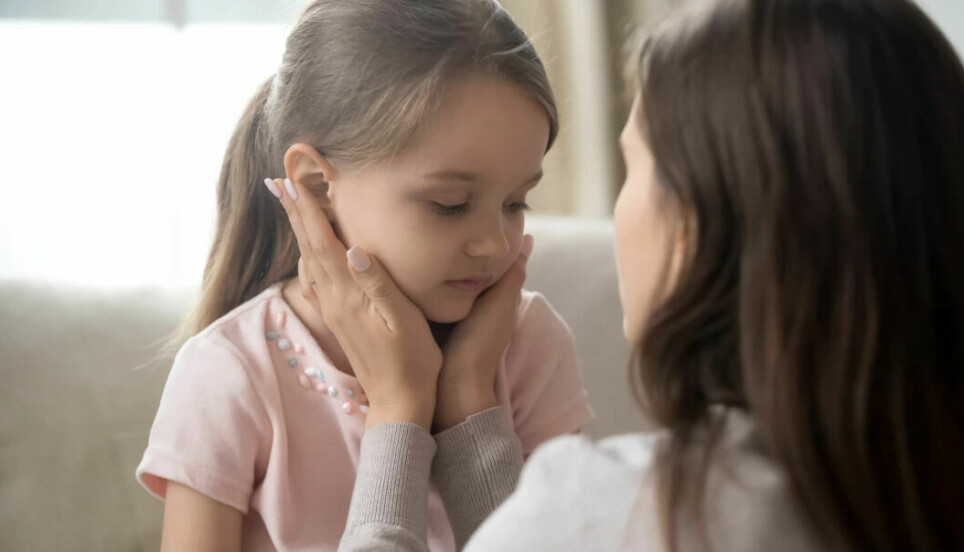
More and more children have shared residency after their parents break-up
As many as 43 per cent of the children now live alternately with one or the other parent after a break-up.
In the past, the common thing was for the children to live permanently with their mother following a divorce or break-up.
But the proportion of children who do so in Norway has fallen from 84 per cent in 2002, to 62 per cent in 2012, and further down to 49 per cent in 2020.
The proportion of children from broken families who live permanently with their father has remained stable at 7 per cent.
Instead, shared residency for the children is becoming the norm.
Socio-economic differences
In a new study, researcher Kenneth Aarskaug Wiik at Statistics Norway has looked at the development in shared residency for children after a break-up in recent years.
His report shows that it is becoming increasingly common for parents to share the day-to-day care of children after they have separated.
Wiik finds that parents with medium and higher incomes share their children’s living arrangements more often than parents with low incomes.
Shared residency is also more common if the parents have higher education.
The researcher finds no difference between those who were cohabiting and those who were married, in terms of how common it is to share residency after a break-up.
But shared residency is more common if the parents have lived together for a long time.

Those who were more equal, share more often
Having two homes is also more common if the parents shared the work at home equally between them when they lived together.
It is also more common if there is a low level of conflict between the parents.
The researcher's interview sample consisted of around 3,000 parents with children who did not live together.
A total of 14 per cent of these had an immigrant background. Among these, 29 per cent shared their children’s living arrangements.
Own room and access to their childhood home
Parents of children with shared residency are with their children around 50 per cent of the time. It is usual for the parents to be together with their child for a week at a time.
Seven out of ten children with two homes have access to their childhood home because one of the parents still lives there. This is less common for the children who permanently live with one of their parents.
Eight out of ten children with two homes have double the number of rooms, compared with around six out of ten children who permanently live with one parent.
Only 0.3 per cent of the parents in this survey practice an arrangement where the children permanently live in the home while the parents move in and out.
Most children are born to unmarried parents
In Norway, just under 20,000 marriages dissolve each year.
But more and more Norwegian parents are cohabiting, and Statistics Norway does not have statistics on how many of these relationships dissolve each year.
More than half of all children born in 2021 had cohabiting parents who were not married.

Shared residency is easier
Several policy changes over the past 20 years have made it easier for parents to share their child’s place of residence, both practically and financially.
In 2003, there was a change in policy on the calculation of child support. It results in lower contributions if one parent spends more time with their child.
A change in the law in 2013 gives children who have reached the age of seven the opportunity to express their opinion, before decisions are made that concern them and their place of residence.
Court settlements
Very few parents of children with shared residency have these agreements determined by court settlements. This is more common if the child lives permanently either only with the mother or only with the father.
Only 6 per cent of parents with shared residency state that they do not have an oral or written agreement regulating the time they spend with their children.
Researchers at Statistics Norway see that the shared-residency parents are generally more satisfied with the living arrangement and the amount of time spent with their children than other parents. Three out of four co-parents state that they are very satisfied.
But parents are most satisfied with the residential arrangement if the child permanently lives with them. A parent is least satisfied if the child lives permanently with the other parent.
How happy are the children?
In this study, the researcher has only heard from the parents.
Children have not been asked how satisfied they are with their living arrangements after their parents' break-up.
But in this sciencenorway.no article from 2019, you will find what 35 children and teens who were interviewed in depth by two researchers told about their lives after their parents had separated.
If the children get to decide, most value flexible arrangements where, for example, they can live longer periods with each parent, or live more with one, according to what they themselves think is practical and desirable.
However, children find this topic difficult to address, because they're afraid of hurting one of the parent's feelings, according to researchers Hilde Lidén and Ragni Hege Kitterød.
———
Translated by Alette Bjordal Gjellesvik.
Read the Norwegian version of this article on forskning.no
Reference:
Kenneth Aarskaug Wiik. Delt bosted for barn etter samlivsbrudd (Shared residency for children after a break-up), Statistics Norway, 53, 2022.
------



































